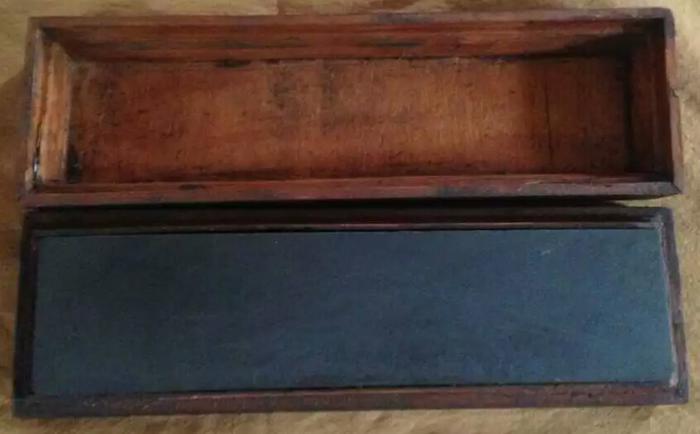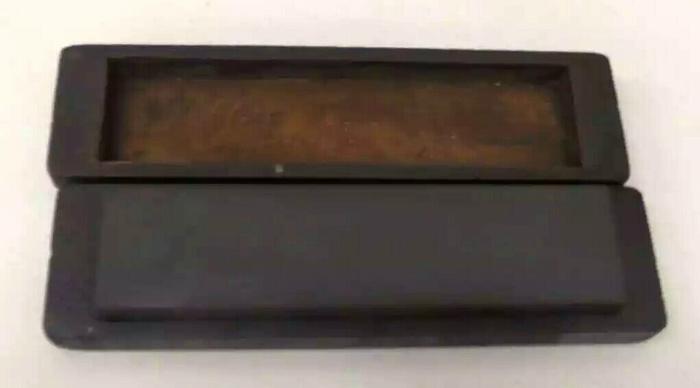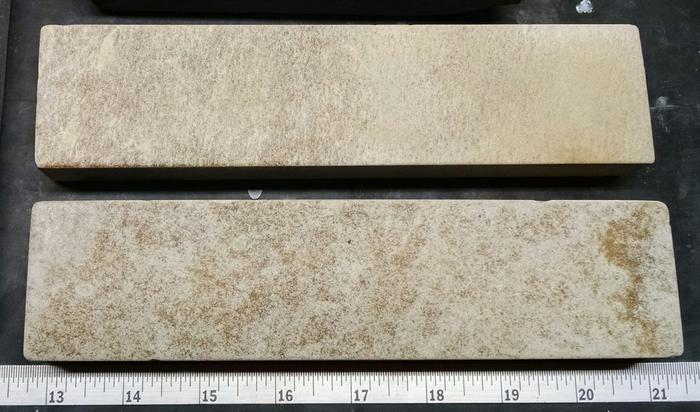Results 11 to 20 of 35
Thread: An Arkansas Stone Question
-
02-08-2015, 07:41 PM #11
-
02-08-2015, 09:56 PM #12Silky Smooth

- Join Date
- Sep 2008
- Location
- Southern California
- Posts
- 802
Thanked: 154
A soft Arkansas stone is usually more uniform in color than a Washita, which often has stripes of white, orange, grey, etc. Not always, but often. The Washita will generally be more porous than a Soft Arkansas, and tiny particles of stone will more readily break free during use which will result in the stone becoming dished out (saddle shaped) much quicker than the other Arkansas stone types.
de gustibus non est disputandum
-
02-08-2015, 10:32 PM #13

here is a 6x2x1 washita I have from my grandpa .
-
02-09-2015, 12:26 PM #14Senior Member


- Join Date
- Jul 2011
- Posts
- 2,110
Thanked: 459
I can only say that if you buy two dozen of each, then you'll have a good chance of making your odds better with buying a washita stone.
The best way I can describe the difference in looks is that washita stones look like the inverse of arkansas stones. When you look at them under a microscope, I don't remember them looking that different. But when you look at them with the naked eye, the soft arkansas looks like a collection of particles (think of what sand would look like if you could glue it together with invisible glue), and a washita looks like a matrix with a collection of pores.
Density isn't always a great way to test, but certainly if you have a stone that has specific gravity of 2.0 or 2.1, it is a washita stone nearly 100% of the time (dans and some of the other retailers will sell extremely soft fragile stones of that density that they label washita, but that are not true washita stones, but they are not common to see. I bought one just to see what it was like).
The stone in the post above me is clearly a washita stone. It looks more like a smooth matrix with some pores on it, and it has a characteristic pattern of a washita. The cut test is the real test, though. a washita will break in to provide a fine edge on steels around 60 hardness (but still cut softer steels fast). A soft arkansas will leave a scratchier edge despite not cutting much faster, and the edge will never have the fineness that a washita edge provides. The feel on a washita will be less gritty, even when it's lapped.
-
02-09-2015, 03:37 PM #15Senior Member



- Join Date
- Apr 2012
- Location
- Diamond Bar, CA
- Posts
- 6,553
Thanked: 3215
Yup, as many of us can attest when buying from a photo, “You pays your money, and take your chances.”
-
02-09-2015, 06:48 PM #16Senior Member

- Join Date
- Sep 2013
- Location
- NW Indiana
- Posts
- 1,060
Thanked: 246
I have a question for OP. Why are you asking this question? Is it to help you purchase a stone? Or just for general knowledge? Just curious.
I have several Washitas and after Dave's post and mention of pores I remembered a characteristic that might help. After honing with a Washita, if you wipe off the oil and look at the top surface of the stone in a way that light is bounced obliquely off of the stone to your eye, (so say you'd be trying to use the stone as a mirror to view the reflection of a light bulb) you can definitely see the pores he mentions. Those aren't there or at least not as prominent/prevalent on regular Arks.Last edited by eKretz; 02-09-2015 at 06:53 PM.
-
02-09-2015, 07:04 PM #17Senior Member


- Join Date
- Jul 2011
- Posts
- 2,110
Thanked: 459
I know my post sounded ridiculous. But what Euclid says is the case, that you get odds when you buy washitas, unless you buy a very expensive labeled washita. I couldn't have done 50/50 before buying about two dozen stones, but now that I've bought about two dozen stones, I think I could probably get a washita 90% of the time even on a stone with a little bit of grime on it.
It would be interesting if people put up pictures of stones dirty and then cleaned, and stated washita or not.
My favorite stone of all is one that was $22 on etsy that came in a nice box and it had a hand written note from a long time ago in it that stated it was used by a professional carver in a factory in indianapolis until 1905. Many of the older stones were over thickness, meaning they were somewhere between 1 and two inches thick when new, and you still have more than an inch of stone when you lap the sway out of them (sway being the concavity along their length).
It is at 5:00 in this video:
(the stone isn't the point of the video necessarily, except to show that it can make a very good edge given how well it cuts - they're a great tool and pocket knife stone, and no maintenance).
I like this stone better than any pike or norton stone I've had, it's got a mottled surface, and in my experience the mottled stones are nice to use. I don't know why. They would've been set off to the side as a sub grade by pike. By mottled I mean there are parts of the surface that are porous and then other uninterrupted parts that have a bit of a different quality than a non-porous arkansas (like a trans or black). On a washita, those continuous parts of the surface still have some bite.
It's hard to explain it, but that is a dead giveaway on a washita.
There's a lot of subtle things about the surfaces of the stones, but you can get fooled by a clean hard arkansas that isn't quite dense enough to be totally non-porous. The large particle softs look slightly different, they're more uniform and you can see the particles vs. the pores.
-
The Following User Says Thank You to DaveW For This Useful Post:
Blistersteel (02-09-2015)
-
02-09-2015, 08:24 PM #18Senior Member

- Join Date
- Sep 2013
- Location
- NW Indiana
- Posts
- 1,060
Thanked: 246
Yeah most of the time it's very tough to tell from photos of used stones because they're so covered in grime. Here are a couple I picked up and what they cleaned up to.



-
02-09-2015, 09:32 PM #19
 This post is not about eBay, it is about knowledge. I am sure after the knowledge is obtained it could be used to collect more stones but that is not the point.I have a question for OP. Why are you asking this question? Is it to help you purchase a stone? Or just for general knowledge? Just curious.
This post is not about eBay, it is about knowledge. I am sure after the knowledge is obtained it could be used to collect more stones but that is not the point.I have a question for OP. Why are you asking this question? Is it to help you purchase a stone? Or just for general knowledge? Just curious.
I would like to tell by visual means, the feel of the stone, honing with the stone, and as much information about the stone as I can absorb.
This stone is truly American and historic. I am drawn by this stone (as well as a beautiful black). I will be visiting Dan's in the near future and hopefully gain more knowledge.
As far as your pictures in your post; are these Washitas? One looks like a Washita, and the other a soft.
-
02-09-2015, 09:46 PM #20Senior Member

- Join Date
- Sep 2013
- Location
- NW Indiana
- Posts
- 1,060
Thanked: 246
They are both Washitas. The pictures in this case are slightly misleading due to the oil staining. If cleaned longer they would both eventually go nearly pure white, but this is good enough for me. Both are excellent fast cutting stones that can produce a shaving edge straight from the stone.


 2Likes
2Likes LinkBack URL
LinkBack URL About LinkBacks
About LinkBacks






 Reply With Quote
Reply With Quote
